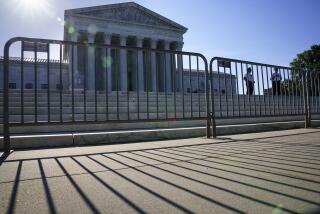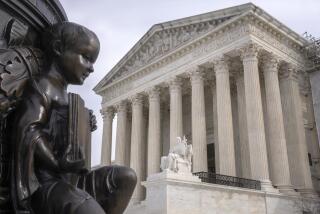Financial Laws May Face Major Overhaul
- Share via
WASHINGTON — The Clinton administration on Wednesday proposed a massive overhaul of the nation’s financial laws to allow banks, insurance companies and securities firms to move fully into each other’s business.
The plan, if adopted by Congress, would accelerate rapidly the development of one-stop financial shopping centers, where a consumer could get a home loan, a credit card, a life insurance policy and 100 shares of Coca-Cola stock.
The proposed legislation would overturn laws adopted during the Great Depression that created barriers between banking and other financial activities after the collapse of hundreds of banks involved in reckless securities marketing and speculation.
Passing legislation, however, “is going to be a tough road,” said Treasury Secretary Robert Rubin. Comprehensive reform has failed for a decade in Congress.
In the last session of Congress, an attempt to roll back the 1933 Glass-Steagall Act, which prevented commercial banks from acting as investment bankers, foundered when insurance industry lobbyists opposed it and the administration failed to propose a bill.
Financial modernization bills have passed the Senate but never the House, according to banking committee aides. The betting this year is that the House, with the administration’s help, can pass some kind of bill.
In an effort to make its long-awaited plan more politically palatable, the administration did not take a position on the controversial idea of allowing banks to merge with industrial and commercial companies.
Just a few months ago, administration planners were talking privately about a bill allowing virtually unlimited mergers between big banks and big corporations. In the plan unveiled Wednesday, however, the administration left it to Congress to decide whether to permit a limited merging of banking and commerce.
Rubin said in a speech to the Exchequer Club that financial modernization would save money for consumers and business. It would also create stronger banking institutions, he said.
“We would permit banks, securities firms and insurance companies to affiliate with one another, reflecting the consensus that this reform is long overdue,” he said.
The nation is still “operating under an outdated legal and regulatory structure,” Rubin said, at a time when many technology-savvy customers are trading stocks on the Internet.
“National banks can sell insurance, but only from a town of 5,000,” he noted. “Securities firms provide bank-like products but can’t actually own a bank. Bank holding companies can underwrite securities, but with arbitrary limitations on the revenues they can derive from that activity.”
Consumers spent $300 billion in 1995 for banking, brokerage and insurance services. Heightened competition could yield savings of 5%, as much as $15 billion a year, according to Rubin. He noted that brokerage fees dropped 20% after the New York Stock Exchange eliminated fixed commission rates in 1975, and discount brokers appeared in the market.
However, consumer groups were skeptical of the administration’s plan.
“We are disappointed there are not better safeguards for consumers,” said Mary Griffin, insurance counsel for Consumers Union. “When banks are allowed to sell everything under the sun, the power of coercion is great.”
Banks offering mortgages might pressure customers to buy homeowners’ insurance, and business executives seeking a line of credit could be leaned on to have their 401(k) retirement funds invested by the bank.
“Nonsense,” responded Ed Yingling, director of federal affairs for the American Bankers Assn., who said there are sufficient protections already against tie-in sales, and there are many competitive choices for bank customers.
The banking industry has lost 50% of its market share in the last decade, and now holds just 28% of all financial assets, Yingling said. However, bankers had a lukewarm response to the administration bill.
They are glad it would allow banks complete access to the business of insurance, securities underwriting and marketing, brokerage services and financial advice. But they are upset, Yingling said, because the administration proposal does not require a merger of the separate bank and thrift charters.
The thrifts--the nation’s savings and loan associations--have a much broader charter, enabling them to go into diverse businesses, and giving them an edge over the banks.
When the banks agreed last year to contribute $12 billion to the ailing thrift insurance fund, they believed they had a promise from the administration to create a single charter, Yingling said. This would give the banks the same wide powers now enjoyed by S&L; holding companies, which can work in insurance, real estate and numerous other activities.
The administration hopes its plan will have a better chance of acceptance in Congress because it does not take a stance on the issue of banks merging with big commercial firms. House Banking Committee Chairman Jim Leach (R-Iowa) is a determined opponent of allowing such mergers, and the opposition is also strong among some influential Democrats in Congress.
“The key thing here is that the proposal does not include a full-blown combination of banking and commerce, which the Treasury was talking about a couple of months ago,” said a key House staff aide.
The Washington Post contributed to this report.
More to Read
Sign up for Essential California
The most important California stories and recommendations in your inbox every morning.
You may occasionally receive promotional content from the Los Angeles Times.










